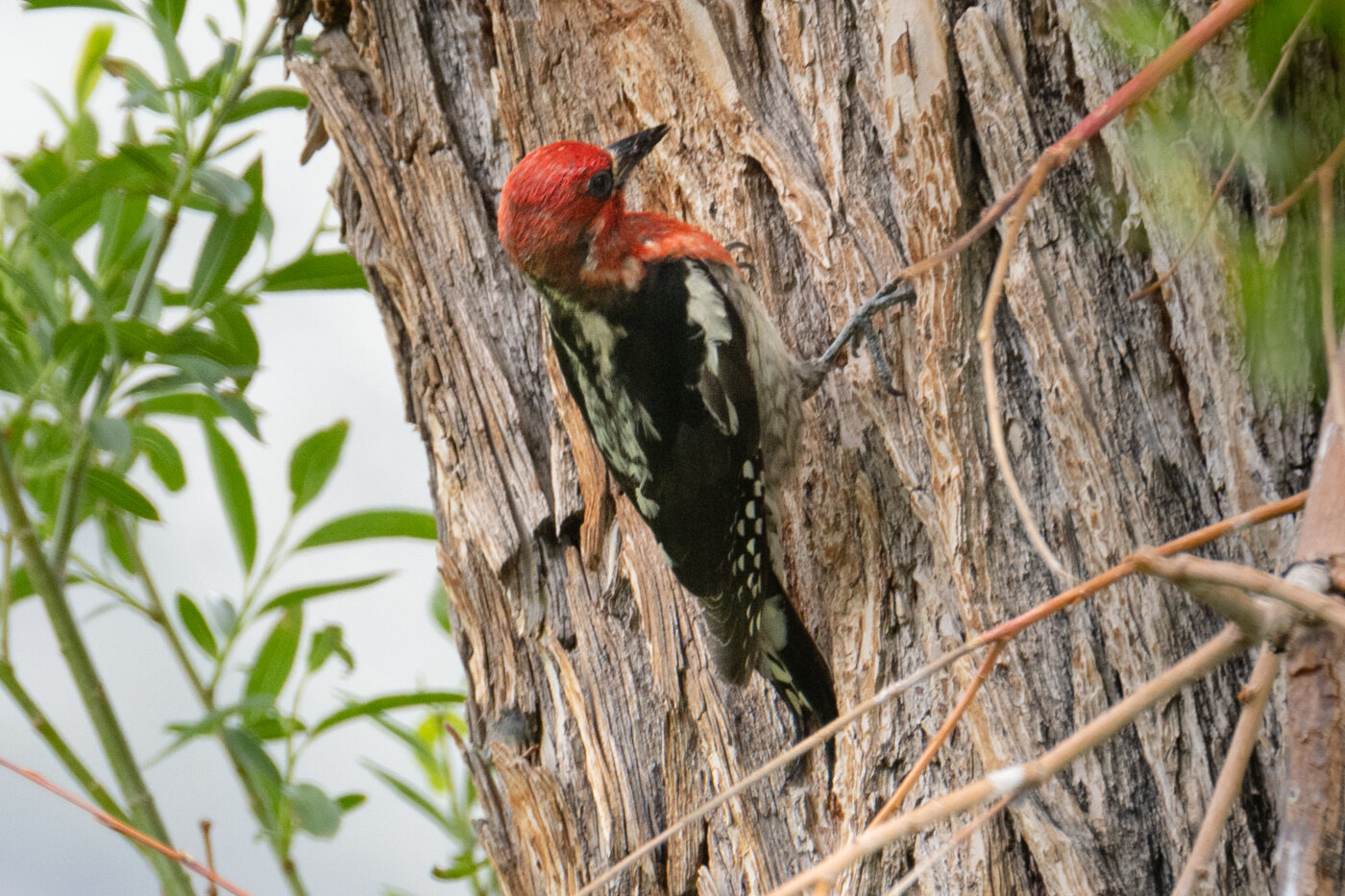2021 Michigan Trip - Mono Lake
Over the next few weeks, I will be traveling across the Midwest to eventually Michigan, with the intent of finding and photographing birds in various locations. Our first stop was Mono Lake. Mono Lake is a body of water slightly outside the Sierra Nevada mountain range, but still within the borders of California. The water itself is very salty because runoff from melted snow in the Sierra pours down into the lake, and when the water evaporates, it deposits all the minerals it gathered from high up in the mountains into the lakebed. This extreme excess of salt helps sustain a large population of brine flies, which gather around the lake as a giant black cloud along the shore. A few local birds rely heavily on the brine flies, such as the massive breeding population of California Gulls (Larus californicus), and in later months, migrating Red-necked (Phalaropus lobatus) and Wilson’s Phalaropes (Phalaropus tricolor). However, we didn’t see that many of either two birds, mainly because it was offseason, and we were looking for birds in a different kind of habitat: the sagebrush. Nevada is famous for its extensive sagebrush sea, but some of it also extends into other states, such as California. Here at Mono, any habitat that isn’t lake, is sagebrush, with some exceptions for a few brief pine forests. Though the birds of the sagebrush habitat aren’t that diverse, they still are new for me and are definitely some of the more unique birds I will see on this trip. Unfortunately, all of this area is extremely dry, meaning you have to constantly drink water in order to prevent your lips from bleeding. But, with this comes a lack of people and roads, meaning you are actually able to hear nothing when you walk out deep into the sagebrush. There is no sound but the wind and the birds, and occasionally nothing when both of them take a break.
This White-headed Woodpecker (Dryobates albolarvatus) looks more like it belongs in a carnival than a forest. Oddly enough, despite its distinctive patterning, it was a tad hard to find this bird. This species is also fairly common, but it was rather windy around the time we saw it and birds don’t really like the wind that much. These woodpeckers typically like coniferous forests, and they live in some of the mountainous regions of the Northwestern states.
Although still a woodpecker, this is a different kind, a sapsucker. This individual in particular was a Red-breasted Sapsucker (Sphyrapicus ruber). This was actually one of two birds that formed a pair that had a nest hole in the same tree. There were also a few other nesting birds nearby, like a kestrel and a few starlings.
Here is the other individual, which most likely has some Red-naped Sapsucker (Sphyrapicus nuchalis) in it too (due to the amount of black in its face). It is also carrying a fecal sack, which is basically the poop of young nestlings. The parents move the sacks away from the nest (or sometimes eat them for nutrition) to confuse predators who may be looking to grab an easy meal by finding a nest.
In a nearby tree, as mentioned previously, was a female American Kestrel (Falco sparverius) incubating eggs. Because she most likely didn’t have any live young, she didn’t really go from the nest, and so this was the best picture I got of her.
One of the most common sagebrush bird species is the Green-tailed Towhee (Pipilo chlorurus). Although this individual may look a little drab, they are very colorful up close, with a rufous cap and white throat. We occasionally get these in San Francisco as vagrant birds.
This is by far the most quintessential bird of the sagebrush here at Mono. With their long reedy songs, Brewer’s Sparrows (Spizella breweri) can be easily identified by sound. There are two subspecies of Brewer’s Sparrow. The ones here and in most of the US are breweri, but there is a separate population of them near Alaska called Timberline.
Here is another shot of the same Brewer’s Sparrow.
The Vesper Sparrow (Pooecetes gramineus) has a near universal range across the lower 48, but for me, they are kind of hard to see, so this bird was pretty special. I also got a good recording of it, as it circled around us, occasionally perching on Antelope Bitterbrush (Purshia tridentata), singing all the while.
Although typically common in the sagebrush sea, we only found one pair of Sagebrush Sparrows (Artemisiospiza nevadensis). However, this bird did pose for us, unlike some of the other bird species at Mono Lake. This particular sparrow actually used to be lumped with Bell’s Sparrow (Artemisiospiza belli) to form Sage Sparrow (Amphispiza belli), which used to be a part of the Amphispiza genus. That genus now only contains Black-throated (Amphispiza bilineata) and Five-striped sparrow (Amphispiza quinquestriata).
Although they do live in California, I’ve never seen them there. However, in the same forests as the White-headed Woodpecker, we saw multiple Cassin’s Finches (Haemorhous cassini). This particular Haemorhous finch is definitely the most colorful of the three.
Here is the same male Cassin’s Finch, this time singing.
Although I’d heard MacGillivray’s Warbler (Geotlypis tolmiei) before, I’d never seen it until I went looking around the campground. This particular individual was a male and was singing very loudly. Unfortunately, they are a very skulky warbler that prefers riparian areas, so it’s really hard to get good pictures of them. In the East, instead of these, they have Mourning Warbler (Geothlypis philadelphia), which are very similar, but lack as strong of an eye-ring.
Also at the campsite was this very confiding House Wren (Troglodytes aedon). Although widespread, they are relatively uncommon in San Francisco, where instead Pacific Wren (Troglodytes pacificus) is the dominant wren species.












